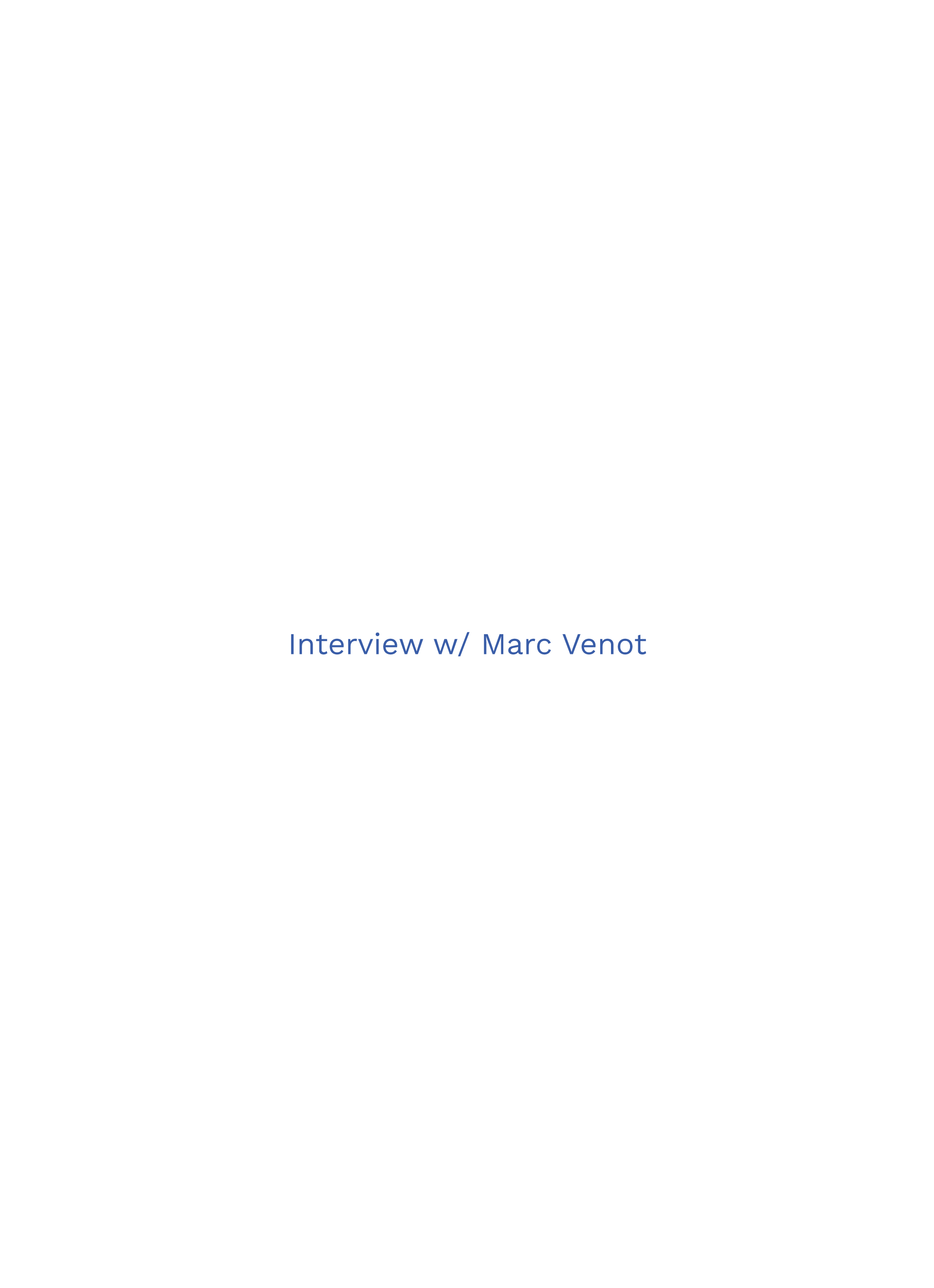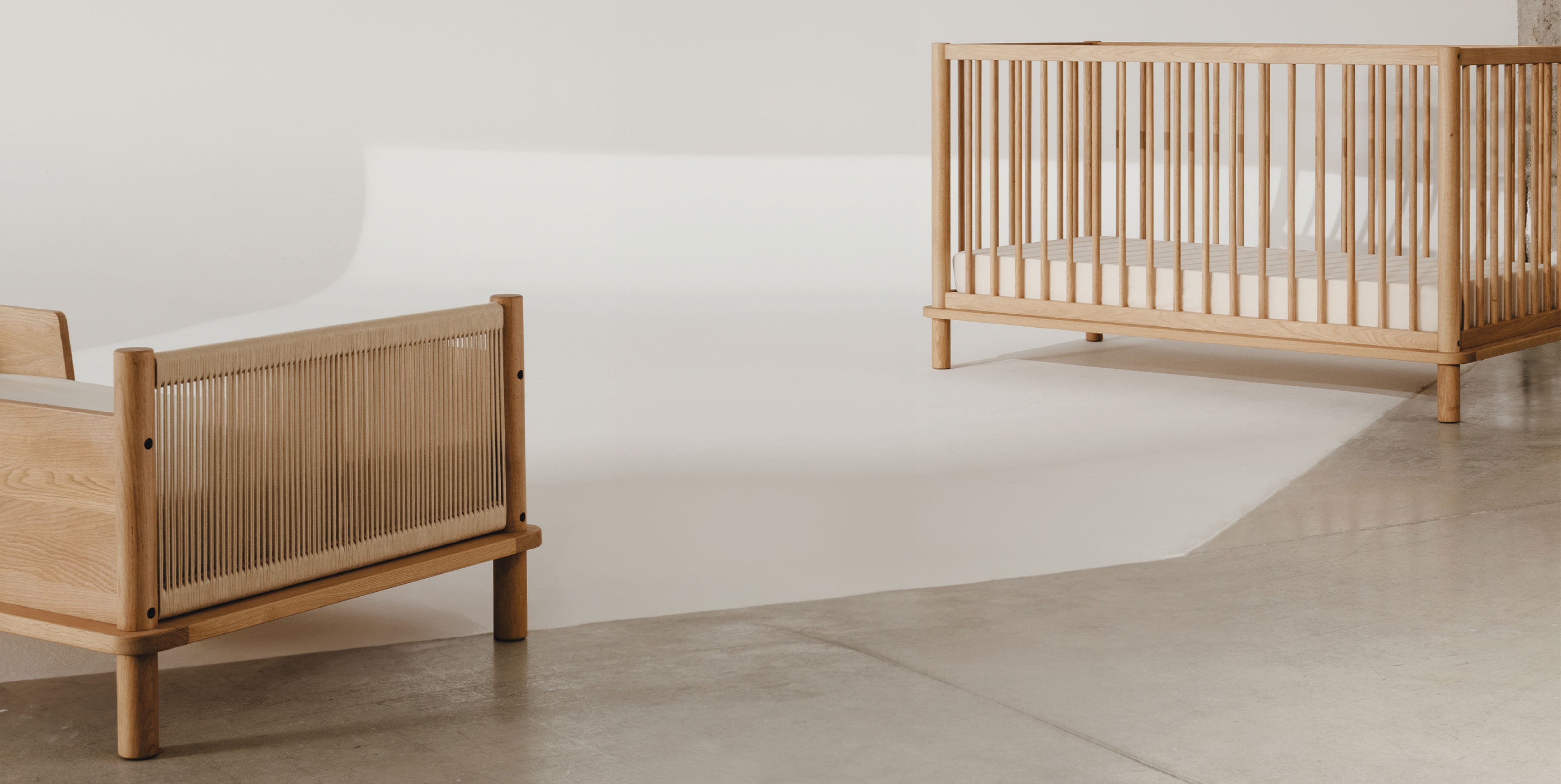The perfect place for a snack with baby
Émilie, co-founder with her sister Virginie of the iconic Klin d'œil, a space where art meets everyday life, shares with us a slice of life, full of creativity, maternal love and moments shared with Gaston, her adorable bundle of joy.
Interview with Marc Venot
Pouvez-vous nous parler un peu de votre parcours et de la façon dont vous êtes devenu designer ?
I began my studies with a Bachelor’s Degree in Mathematics and Physics at Jussieu University in Paris. After these two years, I took the competitive entrance exam for L'ENSCI \ Les Ateliers and was lucky enough to be accepted. I didn't know anything about design, so I thought, let's give it a try and see. And from the moment I arrived at this fabulous school, I knew that this was what I wanted to do with my life: product design.
Y a-t-il des moments clés ou des rencontres dans votre carrière qui ont particulièrement influencé/changé ou inspiré votre approche du design ?
After school, I spent 6 years in a global design agency in Paris as a project manager. I designed a lot of perfume bottles for major luxury brands. At ENSCI, we learned how to think, and drawing often took a back seat. During my time at the agency, I learned to draw, to make form for form's sake. It was a very good complement. After 6 years, I felt I'd come full circle, and I wanted to get back to the product and away from stifling marketing, so I decided to open my own studio in Paris in 2011.


Vous avez développé plusieurs collections avec Nobodinoz, et nous lançons actuellement la nouvelle collection Latitude. Pourriez-vous nous parler un peu de l'objectif et de l'inspiration qui ont guidé la conception des lits Latitude ?
We've been working on this range of beds for some time now. From the start of the project, we were looking for simplicity and timelessness, with a distinctive, recognizable touch. We needed simple, effective and harmonious codes.
The bed is defined quite simply by a slightly protruding, rounded platform, generous, round legs that seem to cross this platform, and then came the idea of adding a special touch with the use of this rope that echoes certain design pieces from the 50s.
En tant que marque, nous pensons toujours à la façon dont les familles vont aimer et adopter nos meubles ou nos objets. Conservez-vous des objets ou des meubles comme s'il s'agissait de trésors de votre enfance ?
I don't have many toys left from my childhood, for the simple reason that I had a strange habit of taking all my toys apart... I had to understand how they worked. The problem after that was to reassemble them properly... and that wasn't so easy. I still have my game boy, which still works.
As for the furniture, my grandmother had a little wooden bed with swallows cut out of the headboard, and I remember that we all wanted to sleep in that little bed, even though we soon outgrew it. We'd bend our knees to sleep in it...
My mother recovered this little swallow bed and it was a real joy for me to see my children sleeping in it.
Quel est le plus beau compliment que vous ayez reçu de vos enfants à propos de vos créations ?
I often ask my children what they think of a particular drawing. It's invaluable because they're direct and unfiltered. Most of the time, they're pretty indifferent, so when they say “Dad, that's pretty good”, I think I might have an interesting drawing.
Quels sont les défis spécifiques que pose la conception de meubles pour enfants par rapport à celle de meubles pour adultes ?
It's a tricky business, because we design objects for children, but it's the parents who buy them. The object has to be optimal in terms of use and comfort, but above all it has to create an emotion for the parents. It's also important to imagine these future products living in a house, so that they blend in well with the rest of the existing furniture and aren't too loud. And then there are the safety standards that are absolutely necessary to guarantee children's safety, but which are often a real headache for designers. You have to learn to juggle all these constraints, and it's not easy.
Comment conciliez-vous les aspects esthétiques et fonctionnels lorsque vous concevez des meubles évolutifs ?
For me, simplicity is an essential element: objects have to be right and timeless so that they last and people don't tire of them. Objects also need to be legible, so that it's easy to understand how they're put together and how they can evolve over time if they have several configurations.
The world is already so complex around us, we need simplicity and durability in our homes. But it doesn't have to be austere. My aim is to be attractive and different, while remaining as simple and legible as possible.
Quelle importance destinez-vous à la durabilité et aux matériaux dans votre processus de conception ?
This is becoming increasingly essential. I think we're very much in tune with Nobodinoz on this point. We use simple, durable materials, with the most natural feel possible. These are objects designed to last for generations.
Pour vous, qu'est-ce qui fait que Nobodinoz et Marc Venot s'accordent parfaitement ?
A fluid, straightforward exchange. We get straight to the point. They have a thorough knowledge of the market and know exactly how to respond to my various proposals. Between Nobodinoz and me, we can talk about co-creation, a real game of ping pong between our ideas, our desires and the reality of the market. An essential point for me is that at the end of the project, everyone is happy and excited about the new product.













